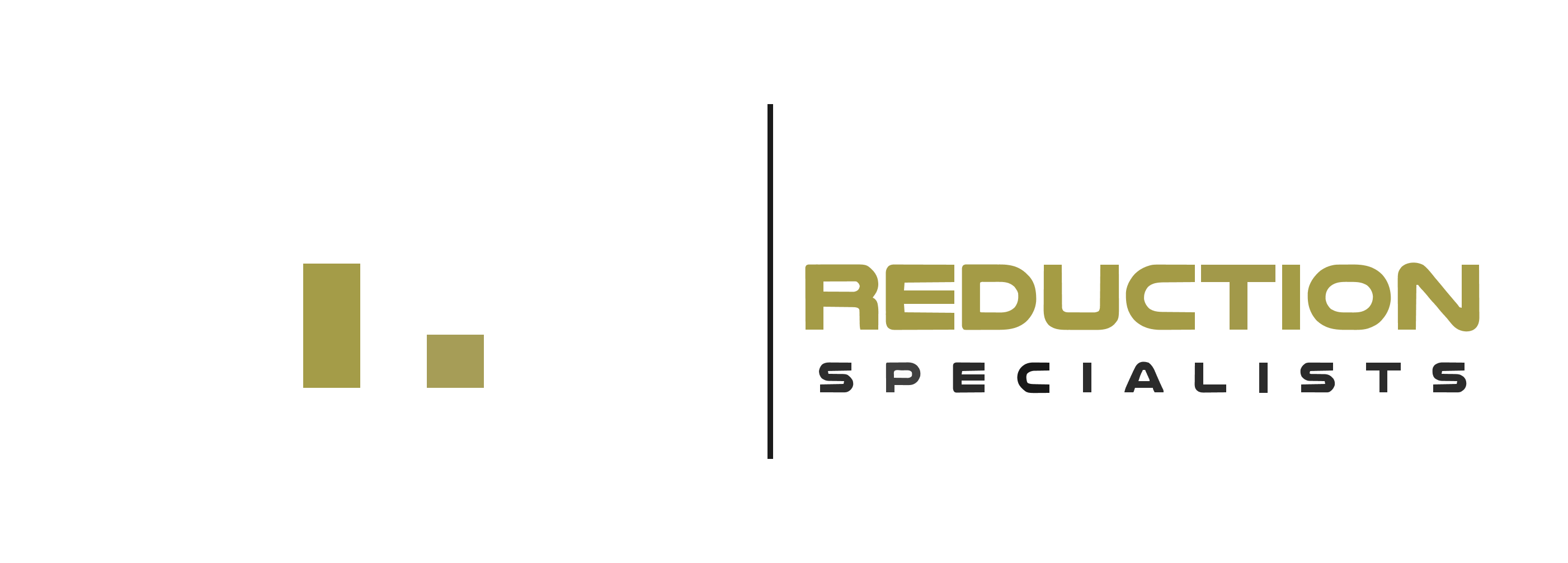How to Build Wealth with Tax-Free Investments: A Step-by-Step Guide
Looking to grow your wealth while keeping more money in your pocket? Tax-free investments might be the game-changer you’ve been searching for. The best way to build wealth through tax-free investments is by strategically utilizing municipal bonds, tax-exempt money market funds, and retirement accounts like Roth IRAs. These investment vehicles offer unique tax advantages that can significantly boost your long-term returns. Whether you’re a high-income earner seeking tax shelter or someone just starting their investment journey, understanding tax-free investment strategies is crucial. In this comprehensive guide, we’ll walk you through: • Different types of tax-free investments and their benefits • Step-by-step approach to building a tax-efficient portfolio • Smart strategies for maximizing your after-tax returns • Common pitfalls to avoid when investing tax-free Ready to take control of your financial future while legally minimizing your tax burden? Let’s dive into the world of tax-free investing.
Key Takeaways:
- – Municipal bonds and tax-exempt money market funds offer federal tax-free interest income, with potential state tax benefits for local investors.
- – Roth IRAs provide tax-free growth and qualified withdrawals, making them ideal for long-term wealth building, especially for those expecting to be in a higher tax bracket during retirement.
- – Strategic asset location across tax-advantaged accounts can significantly improve your after-tax returns and help optimize your investment portfolio.
- – Tax-free investment strategies work best when aligned with your marginal tax rate, investment goals, and overall financial planning objectives.
- – Understanding the interplay between different tax-free investment vehicles and your personal tax situation is crucial for maximizing benefits.
Understanding Tax-Free Investment Basics
Tax-free investments offer a powerful way to grow your wealth while minimizing your tax burden. Let’s explore the fundamental concepts that make these investment vehicles so attractive for smart financial planning.
What Makes an Investment Tax-Free?
An investment becomes tax-free when you don’t have to pay federal, state, or local taxes on the earnings it generates. This special treatment is often granted to certain investments to encourage long-term savings and support public infrastructure projects.
Common Types of Tax-Free Investments
Municipal bonds stand out as the most popular tax-free investment option. These bonds are issued by local governments and their interest payments are typically exempt from federal taxes. In many cases, if you buy bonds from your home state, you’ll also avoid state and local taxes.
Series EE and I Savings Bonds offer another path to tax-free growth. While the interest earned is subject to federal taxes, it’s exempt from state and local taxes. Plus, if used for qualified educational expenses, the federal tax may also be waived.
Benefits Beyond Tax Savings
Tax-free investments do more than just save you money on taxes. They provide:
– Predictable income streams
– Lower overall investment risk
– Portfolio diversification
– Support for local community development
Important Considerations
Before diving into tax-free investments, consider your tax bracket and investment goals. Higher-income investors typically benefit more from tax-free investments due to their higher marginal tax rates. Also, remember that tax-free doesn’t always mean the highest after-tax return – you’ll need to compare tax-equivalent yields to make informed decisions.
???? Key Takeaway: Tax-free investments, particularly municipal bonds and savings bonds, offer strategic advantages for wealth building by providing tax-exempt earnings while supporting portfolio diversification and risk management.
Municipal Bonds: The Foundation of Tax-Free Investing
Municipal bonds serve as a cornerstone of tax-free investing, offering investors a reliable way to generate income while minimizing their tax burden. These debt securities, issued by state and local governments, help fund essential public projects while providing unique tax advantages to investors.
Understanding Municipal Bond Tax Benefits
Municipal bonds offer federal tax exemption on interest payments, making them particularly attractive for investors in higher tax brackets. When you invest in bonds issued by your home state, you might also enjoy state and local tax exemptions, effectively creating a triple tax advantage. This tax-free status can significantly boost your after-tax returns compared to taxable bonds offering similar yields.
For instance, if you’re in the 35% federal tax bracket, a municipal bond yielding 4% provides the same after-tax return as a taxable bond yielding 6.15%. This tax-equivalent yield makes municipal bonds a powerful tool for wealth building, especially for high-income investors.
Types of Municipal Bonds and Their Features
General obligation bonds, backed by the full taxing power of the issuing government, offer strong security for investors. These bonds typically fund public projects like schools and highways. Revenue bonds, on the other hand, are supported by specific income sources like toll roads or utility payments.
Municipal bonds come with varying maturities, typically ranging from one to 30 years. Short-term bonds (1-3 years) offer lower yields but greater price stability, while longer-term bonds provide higher yields with increased interest rate risk. Most municipal bonds require minimum investments of $5,000, though some may demand $25,000 or more.
The secondary market for municipal bonds can be less liquid than other investments, so it’s essential to consider your investment timeline. Working with a qualified broker can help navigate these markets effectively and find bonds that align with your wealth-building goals.
???? Key Takeaway: Municipal bonds offer significant tax advantages through federal and potential state tax exemptions, making them an effective wealth-building tool for high-income investors, despite requiring careful consideration of bond types and investment minimums.
Tax-Advantaged Account Strategies
Tax-advantaged accounts are powerful tools for building long-term wealth while minimizing your tax burden. Let’s explore some effective strategies to maximize their benefits.
Traditional IRA and 401(k) Benefits
Traditional retirement accounts offer immediate tax advantages by reducing your current taxable income. When you contribute to these accounts, you’re essentially investing with pre-tax dollars. This means you can invest more money upfront, allowing your wealth to grow faster through compound interest.
Roth IRA Strategic Planning
Roth IRAs provide unique advantages for tax-free growth. While contributions are made with after-tax dollars, all qualified withdrawals in retirement are completely tax-free. This makes Roth accounts particularly valuable if you expect to be in a higher tax bracket during retirement.
Health Savings Account (HSA) Triple Tax Advantage
HSAs offer an unmatched triple tax benefit. Your contributions are tax-deductible, the money grows tax-free, and withdrawals for qualified medical expenses are tax-free. Consider maximizing HSA contributions and investing the funds rather than using them for current medical expenses to leverage long-term tax-free growth.
Account Coordination Strategy
Coordinate between different tax-advantaged accounts to optimize your tax situation. Consider factors like current vs. future tax rates, investment time horizon, and withdrawal needs. For instance, you might split contributions between traditional and Roth accounts to create tax diversification in retirement.
Contribution Timing
Make strategic decisions about when to fund your tax-advantaged accounts. Contributing early in the year gives your money more time to grow tax-free. However, if your income varies significantly, you might prefer to spread contributions throughout the year to ensure optimal tax benefits.
???? Key Takeaway: Maximize wealth building by strategically using multiple tax-advantaged accounts, considering both immediate tax benefits and long-term growth potential while coordinating contribution timing for optimal results.
Municipal Bond Funds and ETFs
Municipal bond funds and ETFs offer a convenient way to access tax-free investments without the complexities of buying individual bonds. These investment vehicles pool money from multiple investors to create a diversified portfolio of municipal bonds.
Benefits of Bond Funds vs Individual Bonds
Municipal bond funds provide instant diversification across multiple bonds, reducing the risk of default from any single issuer. With a minimum investment often as low as $1,000, they’re more accessible than individual bonds that typically require $5,000 or more per bond.
The professional management of these funds handles complex tasks like credit research and reinvestment of interest payments. This saves you time and provides expertise that individual investors might lack.
Understanding Tax-Free Income Potential
Most municipal bond funds generate income that’s exempt from federal taxes. If you invest in a fund focusing on your state’s municipal bonds, the income may also be free from state and local taxes.
However, it’s important to note that capital gains distributions from these funds are still taxable. When interest rates rise and bond prices fall, the fund’s share price could decline, potentially resulting in taxable losses.
Choosing Between Funds and ETFs
Municipal bond ETFs offer similar benefits to mutual funds but trade like stocks throughout the day. They typically have lower expense ratios and provide greater transparency of holdings. However, they may have wider bid-ask spreads, which can impact trading costs.
Mutual funds, while only priced once daily, often offer more options for state-specific portfolios. This can be valuable if you’re seeking triple tax-free income (federal, state, and local).
???? Key Takeaway: Municipal bond funds and ETFs provide accessible, professionally managed exposure to tax-free investments with lower minimum requirements than individual bonds, though investors should consider factors like expense ratios and state tax benefits when choosing between options.
Optimizing Asset Location
Asset location is a powerful strategy that can significantly boost your after-tax returns. By strategically placing investments in different account types, you can minimize your tax burden while maximizing growth potential.
Tax-Efficient Account Selection
Traditional IRAs and 401(k)s are ideal for holding tax-inefficient investments like bonds and REITs. These accounts defer taxes until withdrawal, allowing income-producing assets to grow without immediate tax consequences.
Roth accounts work best for investments with the highest growth potential. Since withdrawals are tax-free, placing aggressive growth stocks here lets you capture maximum tax-free appreciation.
Strategic Investment Placement
Consider placing tax-efficient investments like municipal bonds and growth stocks in taxable accounts. Their favorable tax treatment makes them suitable for non-retirement accounts where you’ll face ongoing taxation.
International investments often benefit from being held in tax-advantaged accounts due to foreign tax implications. This placement helps avoid double taxation while maintaining portfolio diversification.
Regular Portfolio Review
Monitor your investment allocation across accounts regularly. Market movements can shift your intended asset location strategy, requiring periodic rebalancing to maintain optimal tax efficiency.
Remember to consider your current and future tax brackets when making asset location decisions. What works best today might need adjustment as your tax situation changes over time.
???? Key Takeaway: Strategic asset location across different account types can enhance after-tax returns by placing tax-inefficient investments in tax-advantaged accounts while keeping tax-efficient assets in taxable accounts.
State-Specific Tax Benefits
When investing in tax-free municipal bonds, your state of residence plays a crucial role in maximizing tax benefits. Different states offer varying levels of tax advantages for their residents who invest in in-state municipal bonds.
Double Tax-Free Benefits
Investing in municipal bonds issued by your home state can provide double tax-free advantages. Not only do you avoid federal taxes, but you also skip state taxes on the interest earned. For instance, if you live in California and invest in California municipal bonds, you won’t pay either federal or state taxes on the interest income.
Out-of-State Bond Considerations
While out-of-state municipal bonds still offer federal tax exemption, you might need to pay state taxes on the interest earned. This makes it essential to compare the after-tax yields of in-state versus out-of-state bonds before making investment decisions.
State-Specific Municipal Bond Funds
Many investment companies offer state-specific municipal bond funds that focus on bonds from a particular state. These funds can be an excellent option for residents looking to maximize their tax benefits while maintaining diversification within their state’s municipal bond market.
???? Key Takeaway: Understanding your state’s tax treatment of municipal bonds is crucial for maximizing tax benefits, as investing in in-state bonds often provides both federal and state tax advantages.
Professional Guidance and Considerations
While tax-free investments offer attractive benefits, navigating this complex landscape requires careful consideration and often professional guidance. Working with qualified financial advisors and tax professionals can help you make informed decisions aligned with your financial goals.
Consulting Financial Experts
A certified financial planner can assess your overall financial situation, risk tolerance, and investment timeline. They’ll help create a balanced portfolio that incorporates tax-free investments strategically while considering your broader financial objectives.
Tax Professional Input
Tax advisors play a crucial role in understanding the specific tax implications of different investment choices. They can help you evaluate the true tax-equivalent yield of municipal bonds and determine if tax-free investments are more beneficial than taxable alternatives in your situation.
Regular Portfolio Review
Investment strategies should be reviewed periodically with your financial team. Market conditions, tax laws, and personal circumstances change over time, potentially affecting the effectiveness of your tax-free investment approach.
Documentation Requirements
Keep detailed records of all investment transactions, including purchase dates, costs, and any relevant tax documentation. This information is essential for accurate tax reporting and potential future audits.
???? Key Takeaway: Professional guidance from financial advisors and tax experts is crucial for optimizing tax-free investment strategies while ensuring compliance with tax regulations and alignment with personal financial goals.
Conclusion
Building wealth through tax-free investments is a powerful strategy that can significantly impact your financial future. By incorporating municipal bonds, tax-exempt money market funds, and Roth IRAs into your investment portfolio, you can create a robust foundation for tax-efficient wealth accumulation. Remember, the key is to align these investment vehicles with your financial goals and tax bracket. Take the first step today by evaluating your current investment strategy and identifying opportunities to incorporate tax-free options. Consider consulting with a financial advisor to create a personalized plan that maximizes your tax advantages while maintaining a balanced portfolio. Whether you’re in a higher tax bracket looking to shelter income or just starting your investment journey, tax-free investments can be a valuable tool in your wealth-building arsenal. By implementing the strategies discussed in this guide, you’re well-equipped to make informed decisions about tax-free investments and take control of your financial destiny. Start building your tax-efficient portfolio today and watch your wealth grow with fewer tax obligations.
FAQs
What is the minimum amount needed to start investing in tax-free municipal bonds?
Generally, you can start investing in municipal bond funds with as little as $500-$1,000. Individual municipal bonds typically require a higher initial investment, usually around $5,000. However, some brokerages may have different minimum requirements for tax-free investments.
How often do municipal bonds pay interest?
Most municipal bonds pay interest semi-annually (twice a year). However, some tax-free money market funds distribute income monthly. The interest payment schedule is clearly stated in the bond’s prospectus or fund documentation.
Are all municipal bonds completely tax-free?
Not all municipal bonds are entirely tax-free. While most are exempt from federal income tax, some may still be subject to state taxes, alternative minimum tax (AMT), or local taxes. It’s important to review each investment’s specific tax implications for your situation.
Can I lose money investing in tax-free municipal bonds?
Yes, municipal bonds carry risks despite their tax advantages. Interest rate changes, credit risk, and market conditions can affect bond prices. Additionally, if you sell a municipal bond before maturity at a lower price than you paid, you could experience capital losses.
How do I know if tax-free investments are better for my portfolio than taxable investments?
The benefit of tax-free investments depends on your tax bracket and overall financial situation. Generally, investors in higher tax brackets (28% or above) benefit more from tax-free investments. Compare the tax-equivalent yield of municipal bonds with taxable bonds to make an informed decision.
What happens to my tax-free municipal bonds if the issuing municipality faces financial difficulties?
While municipal defaults are rare, they can occur. If a municipality faces financial difficulties, they might delay interest payments or, in worst cases, default on the bond. However, municipal bonds often have insurance or other protections to safeguard investors’ interests.





![10 Smart Income Deferral Strategies to Reduce Your Tax Burden [Expert Tips]](https://taxreductionspecialists.com/wp-content/uploads/2024/11/tax-burden-768x604.jpg)

